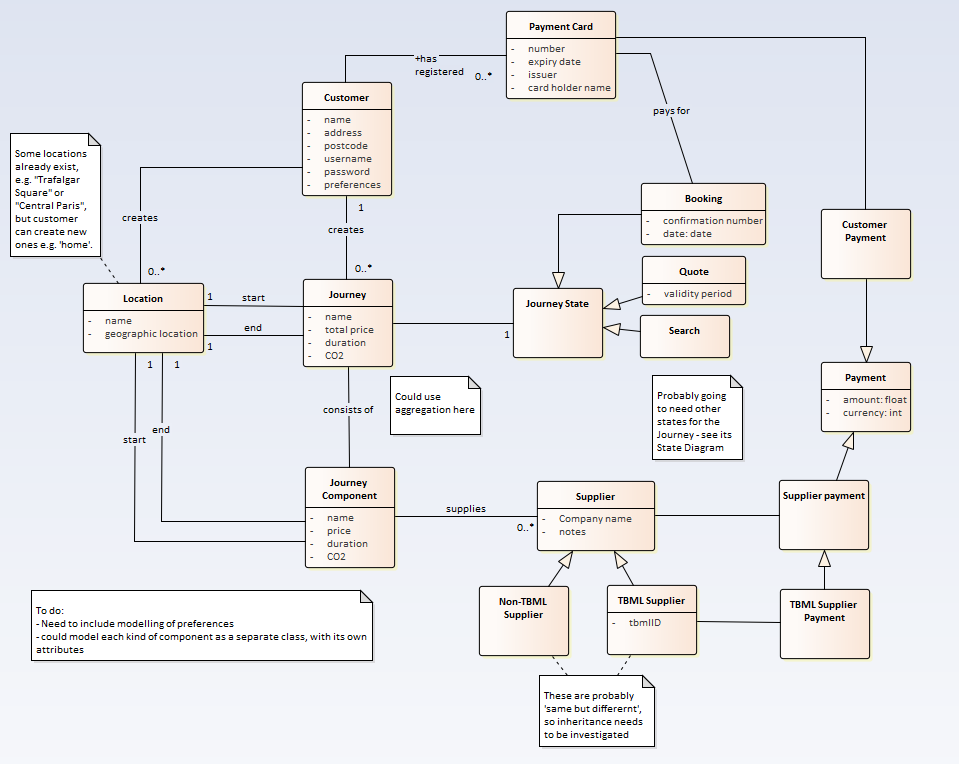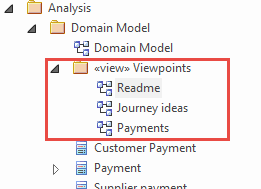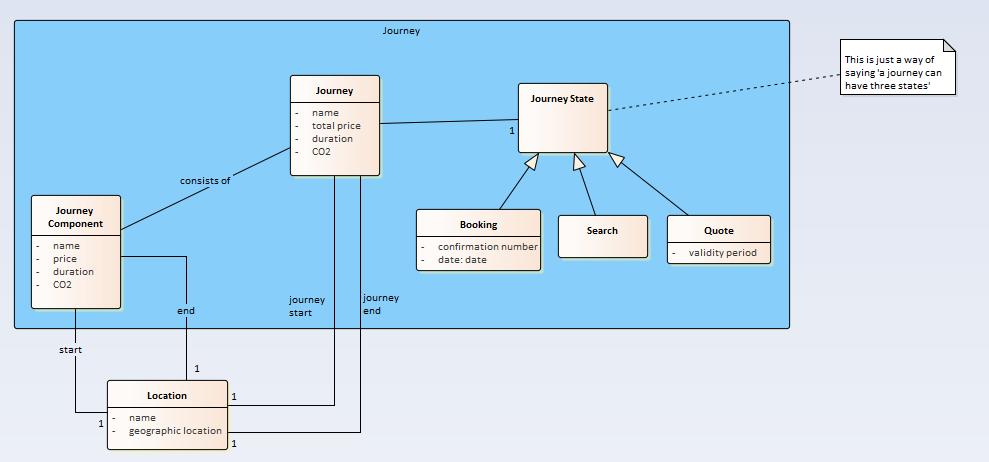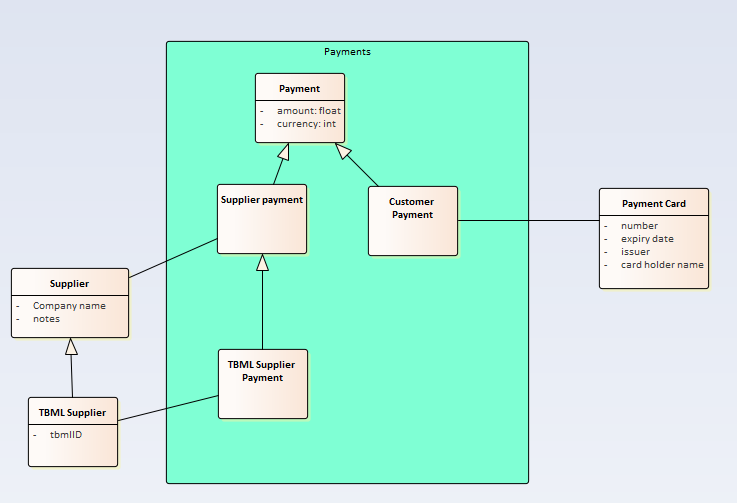Navigating Models: Enterprise Architect Help and Techniques
EA Model Curation Techniques #2 - Making models easy to navigate.
Navigating the model
In the first article I discussed hints for cleaning the content that already exists in your model so it makes sense to a new user. The next step is to help them find their way through it – do they just start with the first package and work down the project browser item by item, or is there a better way?

"Readme" diagrams
“Read me” diagrams are a great way to tell new users a story: where to look first, then what next, and develop your ideas step by step.
Most models contain just the diagrams needed to deliver the project.
But new users need more clues. So think about what new stuff you’ll need to create to help them.
Why not create a family of diagrams which are just intended for new users? I call them ‘read me’ diagrams. Users should quickly recognize that this is the diagram to look for when exploring a new bit of the model.
I recommend giving these diagrams their own stereotype (yes, EA diagrams can have stereotypes) so that all these diagrams can be excluded from existing documentation and don’t get in the way. (For eaDocX users, see diagram filters)
EA also lets us add ‘Navigation Cells’ to diagrams. These are little boxes with icons in them, which, when the user clicks them, take them to another diagram. This is how Sparx layout their ‘EAExample’ model, and it gives the diagrams a hierarchy which is independent of the package structure.
I tend to put all this new stuff into new packages, all called ‘Viewpoints’, and also give them their own package stereotype, so they can be excluded from documents as well.


New diagrams
The Readme diagram (above) contains hyperlinks to some new additional diagrams, which can be created just for new users.
These diagrams are more specific than the general ‘readme’ diagram. They show just one aspect of the model, and are designed to help users on their journey towards understanding the model.
For example, I created some diagrams which help users to understand two key parts of our overall domain model: Journeys and Payments.
Note that we’re using all the modeler’s tricks here: we have used coloring to show what content is part of each model idea, and laid-out the diagrams to show the hierarchy of those ideas. It would be hard to put these onto the overall project diagram (above) – it would make reading the diagram just too complicated.
Note that these diagrams also only have a small number of ideas in them: in this example, just domain model classes. They might also, for example, show how Components relate to Use cases, or Requirements to their stakeholders. In all cases, keep these diagrams simple, and easy to understand. Even if they don’t tell the whole story.


EA Model Views
The idea of ‘model views’ has been in EA for a long time, but seems not to be used much, which is a shame, because it’s great for helping people understand models.
EA Model Views can have a ‘favourites’ kind of folder, into which you can put diagrams, elements and packages, and control their sequence. This nicely fits into the idea of a curated set of EA content, which can help to explain a model.
So you can create a set of these ‘Favourite’ Model Views, for the different kinds of new users.
Using diagrams and Model Views in this way delivers a friendly introduction as new users start to explore your model. Combined with the simple cleaning tasks described in the first article in this series, the job is almost done.
Other articles in this series:
More Insights
Documents are dead - or are they?
19 October 2023
If your organization needs documents then you need eaDocX and Revision Manager - for quality documents, easy reviews and fast efficient model updates.
Learn MoreDocument-based EA model collaboration
27 September 2023
eaDocX and eaRevisionManager provide a cost effective and powerful solution for efficient document-based collaboration in Enterprise Architect.
Learn MoreWhy has eaDocX become eaTeamWorks?
27 September 2023
Here are the reasons why eaDocX is now part of eaTeamWorks - and why it's good for you.
Learn MoreCreating Custom Documents in Enterprise Architect 16
21 September 2023
Enterprise Architect 16 offers refined tools for customizable report-building. But sometimes you need even more. And fast. Here's how.
Learn MoreTraceability using Multi-hop Relationships
9 September 2021
Using eaDocX multi-hop relationships you can easily print the end points of 'virtual connectors' showing EA end-to-end traceability.
Learn MoreEnterprise Architect Tables: Using word table styles in EA
25 June 2021
This video shows how to apply Word table styles when you generate eaDocX documents from your Enterprise Architect models.
Learn MoreVideo Masterclass - Adding Detail to EA Matrix Reports with eaDocX
25 June 2021
With eaDocX you can format EA Matrix Reports in Word to include additional details and formatting. Here's how
Learn MoreVideo Masterclass - Creating documents from Model Views
25 June 2021
Use EA Model Views to create simple, flexible documents with eaDocX.
Learn MoreConditional Formatting Tool for Enterprise Architect
25 June 2021
Help readers find the things that need their attention, decisions and actions, with eaDocX conditional formatting.
Learn MoreVideo Masterclass - Attribute mapping with EA, eaDocX and Excel
25 June 2021
With eaDocX and Excel, it's easy to view, edit, create and even delete attribute/attribute links in Sparx EA.
Learn MoreEnterprise Architect Help: Choosing the right document structure
25 June 2021
eaDocX makes it easy to create exactly the document structure your readers need. Here's how...
Learn MoreEnterprise Architect User Guide - quick documents
22 June 2021
Video guides on how to create quick documents with EA's leading add-on, eaDocX.
Learn MoreDocuments in the Enterprise Architect Cloud
6 April 2021
eaDocX in the Cloud: Enterprise Architect document creating for EA SAAS environments
Learn MoreProducing Enterprise Architect RACI reporting
11 March 2021
Producing a RACI report from data held in EA, mapping stakeholders to any project deliverables is straightforward with eaDocX.
Learn MoreModels matter - nearly as much as deliverables
25 August 2020
Models matter - nearly as much as model deliverables
Learn MoreFixing your meta-model
25 August 2020
Advice for the new modeller #3 – Fixing your meta-model
Learn MoreKnowing when to give up
25 August 2020
Knowing when to step back makes for better Business Analysts
Learn MoreUsing Enterprise Architect to document decision making
25 August 2020
Make your models more useful for future modellers
Learn MoreExplaining EA Sparx Systems to non-modellers
25 August 2020
Model driven analysis - the best way to define what we do?
Learn MoreHow to simplify BPMN Data Models
25 August 2020
Why simplifying your diagrams can actually make them more informative.
Learn MoreUML Business Analyst Solutions
14 August 2020
Using UML to resolve inconsistencies, gaps and overlaps.
Learn MoreCleaning: How to Simplify Enterprise Architecture Models
14 August 2020
Model Curation Techniques # 1 - Cleaning your EA model before you let other people see it
Learn MoreIncluding Sparx EA Model Provenance
14 August 2020
Sparx EA model help to explain to others why your models look the way they do.
Learn MoreWhat to include in your Enterprise Architect documentation
29 July 2020
How to create documents which communicate your ideas efficiently and effectively to stakeholders.
Learn MoreOrganising an Enterprise Architect Model
28 July 2020
Seven ways to organise your EA models so that other people can understand them
Learn MoreChoosing Your UML Subset
27 July 2020
Narrowing down the modelling ideas in your Enterprise Architect model to make consistent, understandable models.
Learn MoreWebinar: Using Interactive Documents to Collate Sparx EA Model Feedback
17 July 2020
A webinar from the EA Global Summit 2020.
Learn MoreWebinar: How to successfully scale up your Enterprise Architect team
30 June 2020
A webinar from the EA Global Summit 2020.
Learn MoreValidation: Improving your Enterprise Architecture Model Structure
16 April 2020
EA Model Curation Techniques #3 - Validating your model
Learn MoreModelling techniques for business architecture software to explain general patterns
16 April 2020
Using object diagrams to explain general patterns with specifics.
Learn MoreHow to create personalised documents using Sparx document generation tools
16 November 2018
A guide to creating documents from Sparx EA models so everyone can engage with your work, project or deliverables.
Learn MoreDocument or Enterprise Architect Views?
21 May 2018
Create documents to be used by non-EA users instead of model views.
Learn MoreImprove your enterprise architecture model using colour
25 April 2018
Careful use of colour and shape makes models easier to digest.
Learn MoreModel curation techniques for EA Sparx Systems
6 March 2018
How cleaning, navigating and validating your EA model makes sharing and collaborating much more effective.
Learn MoreThe most re-used model components in Sparx Enterprise Architect.
20 October 2017
Why is the project summary the most read element in an EA model?
Learn MoreCreating a Glossary: Business Analyst Terminology
12 October 2017
Streamline your business understanding with shared definitions.
Learn MoreBusiness Process Analyst Styles
11 October 2017
Find out if you are a 'hard' or 'soft' Business Analyst.
Learn MoreHow to Print Sparx EA Connectors
18 October 2016
Structure your documents using the connectors in your Sparx model.
Learn MoreUsing Multi-hop relationships to display Branch/Merge with EA13
11 August 2016
One of the most common requests we see from new EA users is: "Why can’t I do branch/merge with EA?
Learn More